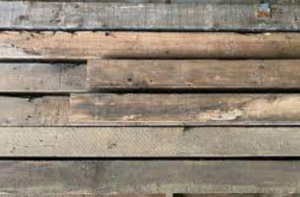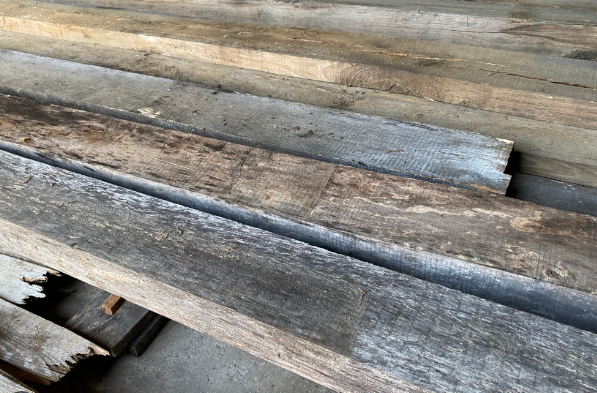Reclaimed wood has become increasingly popular in recent years due to its unique character, environmental benefits, and sustainable nature. Whether you’re embarking on a DIY project or hiring a professional, working with reclaimed wood requires careful consideration and expertise. In this article, we will provide you with valuable tips for choosing and working with reclaimed wood, ensuring your project’s success, and maximizing the beauty of this eco-friendly material.

Understand the Source
When selecting reclaimed wood, it is crucial to understand its origin. Reclaimed wood is salvaged from various sources such as old barns, factories, and even shipping pallets. Each source offers distinct characteristics, including grain patterns, weathering, and historical value. Research the history of the wood to appreciate its unique story and assess its suitability for your project. Ensure that the wood has been properly deconstructed, processed, and stored to avoid potential issues such as pests or rot.
Assess Quality and Stability of Reclaimed Wood
Reclaimed wood often exhibits signs of age and wear, which adds to its charm. However, it is essential to inspect the wood for quality and stability. Look for signs of damage, such as excessive splitting, insect infestation, or excessive moisture. Check for warping, twisting, or cupping that could affect the wood’s usability. Avoid wood with large knots or cracks that compromise its structural integrity. Properly dried and stable reclaimed wood is crucial to prevent future problems and ensure durability in your project.
Consider Dimensional Challenges
Unlike newly milled wood, reclaimed wood may come in irregular sizes and shapes. It’s important to plan your project accordingly and consider any dimensional challenges you may face. Work with a skilled professional or invest in appropriate tools and equipment to effectively handle the unique dimensions of wood. Patience and flexibility will be key when working with this material.
Prepare for Surface Treatment
Reclaimed wood often boasts a weathered and distressed appearance that many find appealing. However, the surface may require some treatment to ensure its longevity and usability. Before starting your project, decide on the desired finish or treatment for the wood. This could include sanding, staining, painting, or applying a protective coating. Take into account any additional steps required to prepare the wood’s surface and make it suitable for your intended use. Properly treating wood will enhance its beauty while protecting it from further degradation.
Safety Precautions
Working with wood requires extra safety precautions due to its age and potential contaminants. Wear appropriate protective gear, such as gloves, safety glasses, and a dust mask, to avoid splinters and exposure to potentially harmful substances. Consider having the wood tested for lead paint or other hazardous materials, especially if you plan to use it indoors or in contact with food. Adhere to safe woodworking practices, such as using sharp and well-maintained tools, securing the wood properly during cutting, and working in a well-ventilated area.
Research and Learn about Wood Species
This type of wood can come from a variety of tree species, each with its unique characteristics and properties. Some species, such as oak or pine, are commonly found in reclaimed wood, while others, like chestnut or heart pine, may be rarer and more valuable. Research the different wood species used in reclaimed wood and understand their qualities, such as hardness, grain pattern, and color variations. This knowledge will help you select the right wood species for your project and make informed decisions about its appropriate use and finishing techniques.
Consider Moisture Content of Reclaimed Wood
Reclaimed wood often has a higher moisture content than freshly milled wood. It’s crucial to measure and understand the moisture content of the wood before starting your project. High moisture content can lead to warping, splitting, or mold growth. If necessary, let the wood dry further in a controlled environment or use a moisture barrier, such as a sealant or primer, to protect against moisture-related issues.
Embrace Imperfections of Reclaimed Wood
One of the distinctive aspects of working with wood is its imperfections, such as nail holes, knots, or weathering marks. Rather than viewing these as flaws, embrace them as part of the wood’s history and character. These unique features add charm, authenticity, and a rustic appeal to your finished piece. In addition, consider incorporating the imperfections strategically or highlighting them through specific finishing techniques. By embracing the inherent beauty of wood, you create one-of-a-kind projects that showcase its story and provide a conversation piece in any space.
Conclusion
In conclusion, choosing and working with wood requires careful consideration and attention to detail. By conducting thorough research, seeking professional expertise, understanding moisture content, exploring joinery techniques, and embracing imperfections, you can unlock the full potential of reclaimed wood and create stunning, sustainable pieces that stand out in both aesthetic and environmental value.


